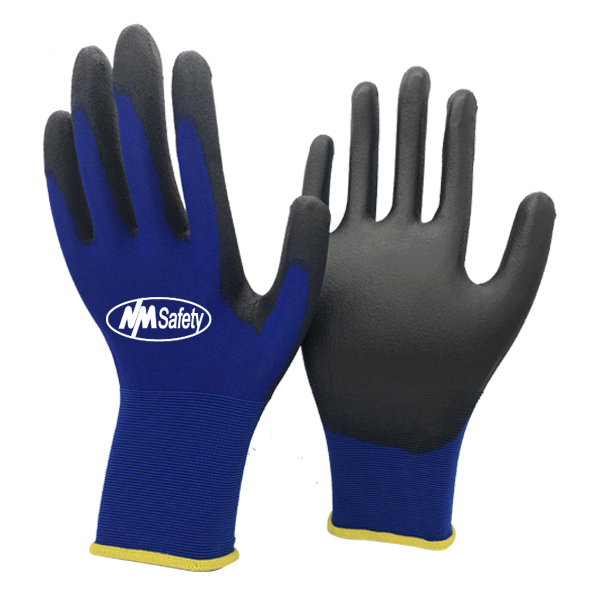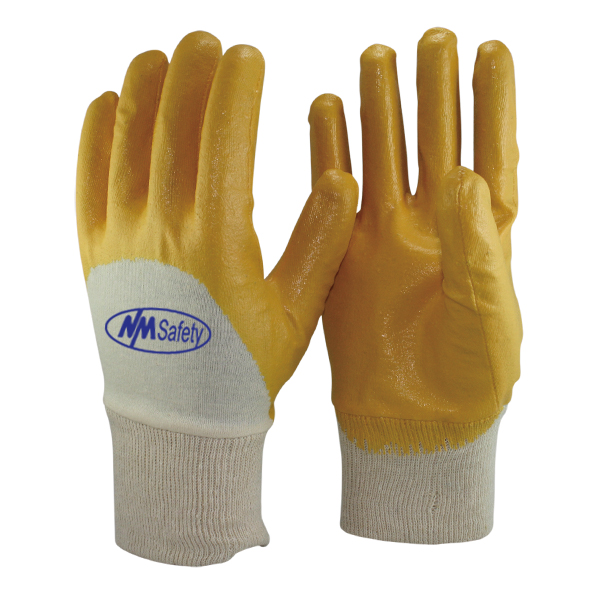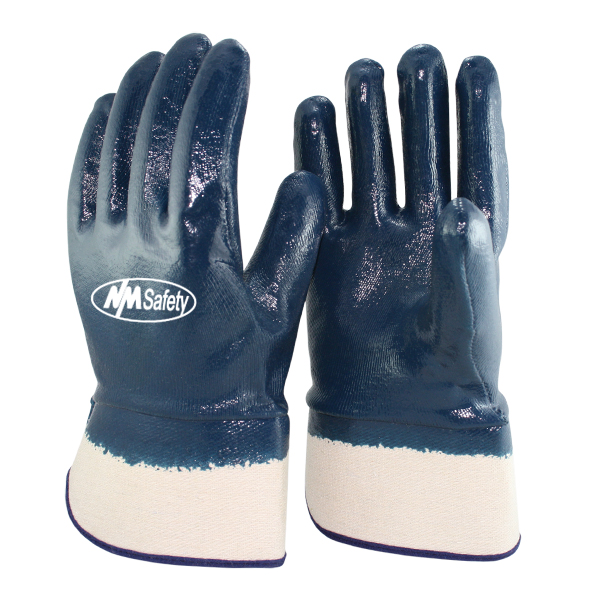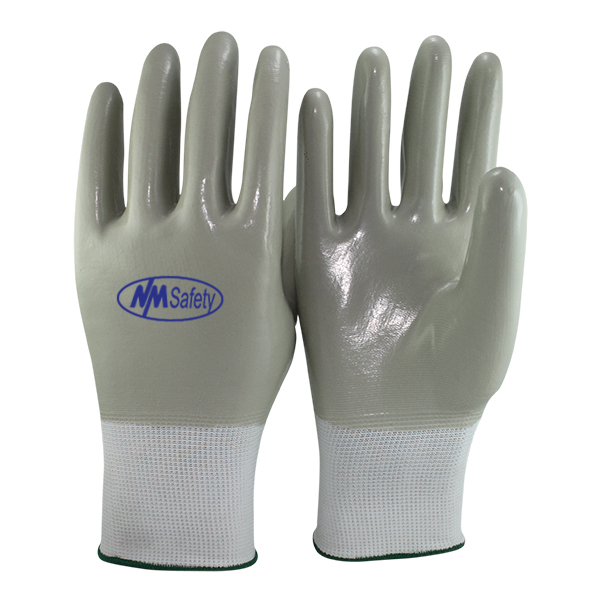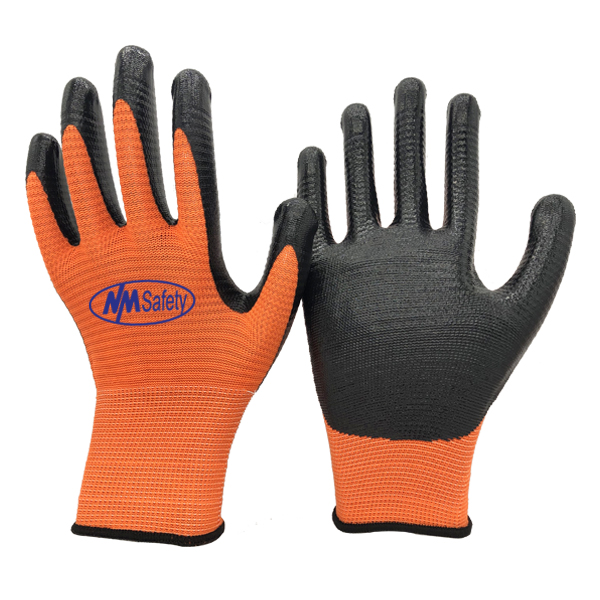Language of gauges: You've probably noticed that most machine-knit work glove descriptions mention the gauge. The gauge of a glove is determined by the number of stitches per inch of material. Manufacturers frequently offer gloves with gauges ranging from 7 to 18. What does this mean for your staff, though?
You'd think that lower means lighter and higher means heavier, but this isn't the case! Gloves with a smaller gauge weigh more, while gloves with a larger gauge weigh less.
Lower-gauge gloves have thicker yarn and fewer stitches per inch than higher-gauge gloves. The knit will be looser with greater space between the stitches as a result.
In a higher-gauge glove, a finer, thinner yarn is used, and there are more stitches knitted per inch. As a result, the weave becomes tighter. At the highest end, any space between stitches is invisible to the human eye. They are also called Thin Gloves or Thin PU Gloves.
Lower-gauge gloves: Smaller Gauge Gloves are rougher and have less dexterity than higher gauge gloves. Although it won't be as difficult to move your hand as it would be in a larger leather glove, picking up small objects such as nuts or bolts may be challenging.
Higher-gauge gloves: The higher the gauge, the softer and more dexterous the material. As a result, wearing a higher-gauge glove will be more comfortable, and tasks requiring fine motor skills will be easier to complete.
Guage-18 has the following characteristics: 18 gauge machine-knitted
The current lightweight protection standard is only offered by a few manufacturers.
Threads with a very fine weave
The tally is really low (100 to 200 denier)
Gloves that are extremely light in weight
Gloves that are flexible and supple
Braiding is a difficult task.
How Do Touch Screen Gloves Work? In recent years, touchscreen technology has progressed tremendously, and gloves are constantly changing to meet the needs of users. Our natural hands direct the information we wish to see on electronic devices by triggering electronic sensors with our body's inherent energy. What happens if your hands are coated in hand protection, though? Unless the glove features capacitive touch functionality, you won't be able to set off any alarms. Touch displays will not work with most gloves because they are composed of non-conductive materials. Two approaches for overcoming touchscreen incompatibility are a conductive coating or conductive threads. Conductive coatings can be applied to the fingertips, or conductive threads can be knitted into the gloves. Threaded material is included on many of our cut-resistant gloves, making swiping any electrical item effortlessly. If you're having trouble with this, PU-coated gloves are a decent solution.
Nylon's Features: Nylon fibers are also excellent for manufacturing lightweight labor gloves due to their elasticity and comfort. Because nylon fibers are easy to dye, they are commonly used in cut-resistant gloves. Nylon is wrapped around cut-resistant fibers such as glass or steel. Nylon work gloves have replaced polyester as the go-to lightweight work glove for situations demanding dexterity but more protection than a throwaway.
Nylon Gloves Have a Wide Range of Uses: Inspectors' gloves and PU coated gloves or Nitrile dipped work gloves are two of the most prevalent lightweight nylon work gloves. Nylon gloves have surpassed other general-purpose gloves, such as leather palm or cotton gloves. Electronics, laboratory work, semiconductors, medicines, and other precise jobs benefit from these lightweight work gloves.
Because these tasks necessitate total cleanliness and no fingerprint contamination, nylon gloves, which are low lint and more durable than cotton string-knit gloves, are ideal. Nylon work gloves are ideal for cleaning, handling, and assembling small items, instrument parts, and other duties where fingerprint contamination is a problem due to these qualities.
The most common nylon work gloves are white inspector's gloves, which are ideal for inspections due to their low-linting qualities. Pollutants are easily visible when inspected due to their white color. Nylon work gloves in black and gray hide dirt and are durable, whereas nitrile or polyurethane dips provide better grip in oily conditions.
What Exactly Does "Palm Coated Gloves" Mean? Protective material is coated on the palms of palm-coated gloves, which are PU flex gloves. The level of protection supplied is determined by the type of material employed; for example, nitrile gloves provide more protection than PVC gloves.
What are polyurethane-coated gloves?: PU-coated gloves, also known as PU Flex Glove, are a form of personal protection equipment (PPE) glove developed for applications requiring precision, dexterity, and sensitivity. They're made of polyurethane foam with a nylon liner that protects your hands from abrasion and chemicals while remaining lightweight and pleasant.
What are the advantages of wearing PU-coated gloves? Gloves with a PU coating have several benefits that make them helpful in a variety of sectors and occupations. A few instances are given below:
Stretch: PU-coated gloves are perfect for jobs that require a high level of sensitivity and dexterity due to the elasticity of polyurethane. The material protects the individual even when cut-resist anything that most other flexible materials cannot achieve.
Hold: Another significant advantage of PU-coated gloves, sometimes known as PU Flex Gloves, is their better grip. Because of the material's properties, wearers have increased grip while maintaining protection and flexibility.
Cost: Finally, the manufacturing and purchasing expenses of these gloves are both relatively modest. This is a huge benefit for both businesses and employees because PU-coated gloves must be replaced regularly. This isn't a huge concern, though, due to their low price.
Conclusion: Since the turn of the century, work gloves have gone a long way. As a result of new technologies, our methods for protecting our hands have changed tremendously, as have the materials we use to do so. Moisture, oil, abrasion, cuts, and heat are all protected by a flexible liner with a palm, 3/4, or full glove coating. The glove covering is only mentioned on this page. There are many different glove coatings to choose from, but latex, nitrile, and polyurethane are the most prevalent. Each coat has its own set of advantages.




